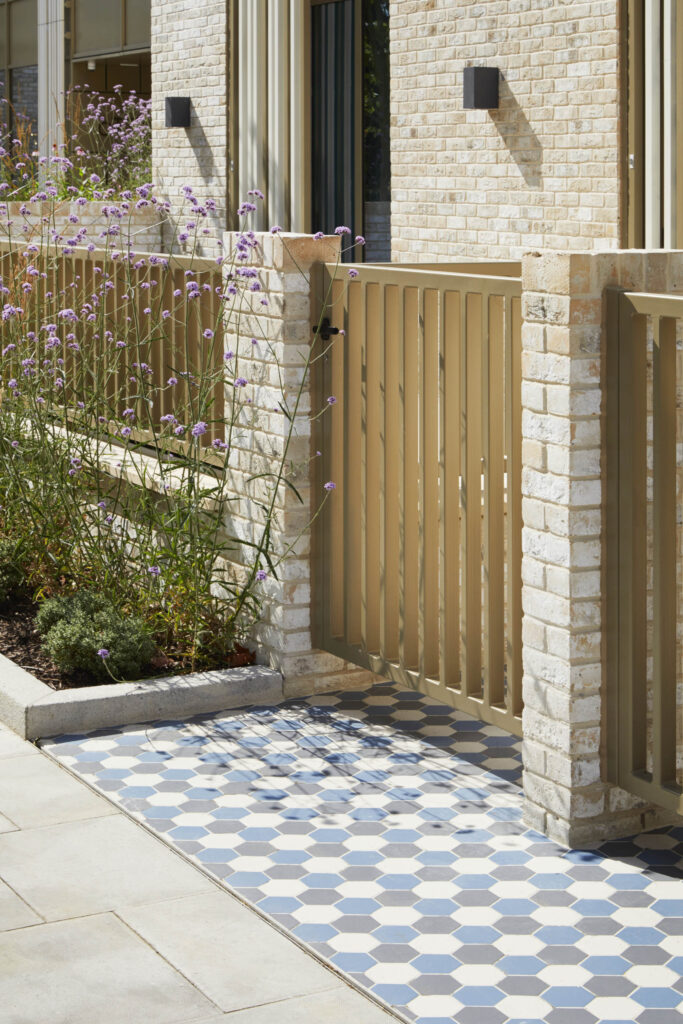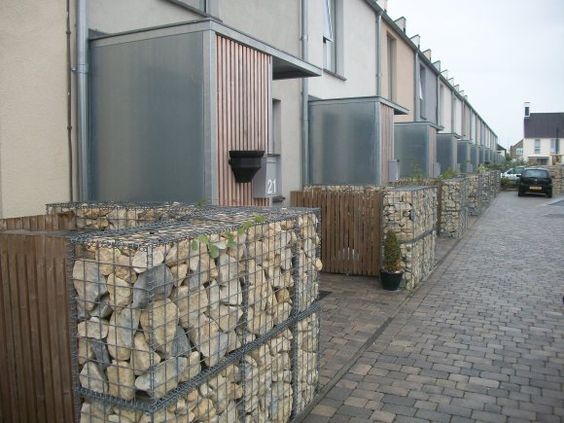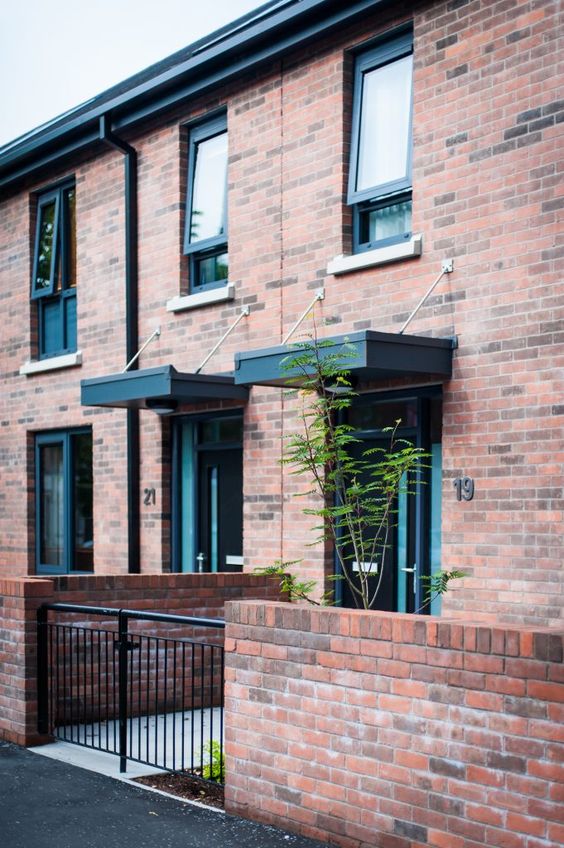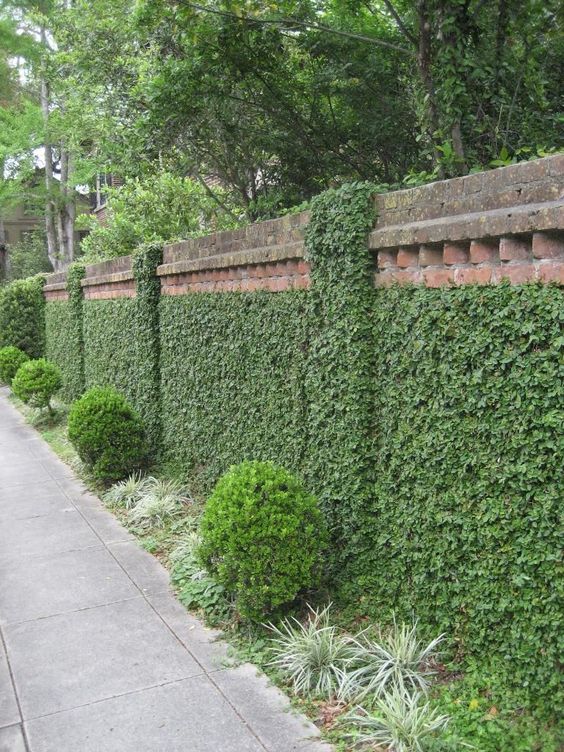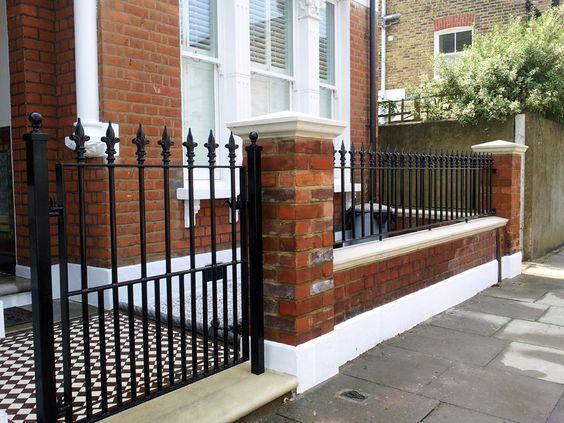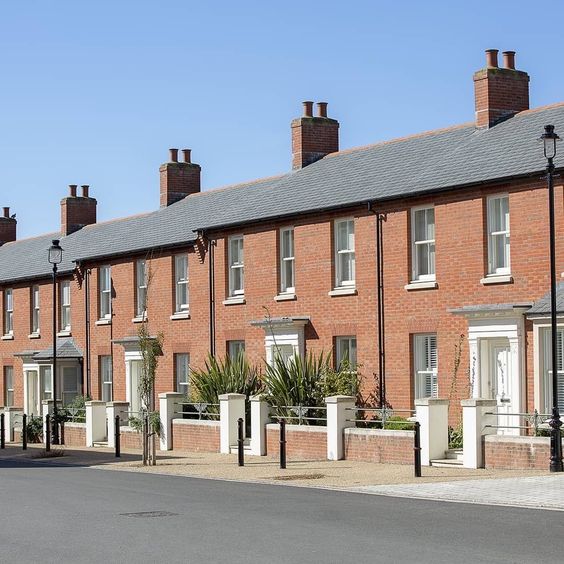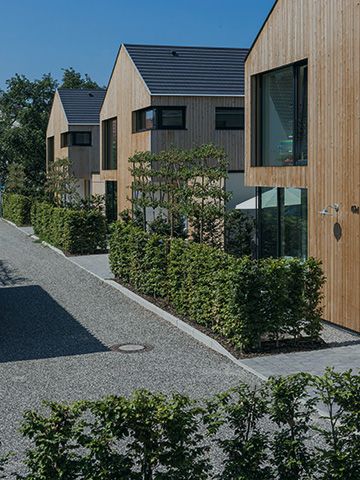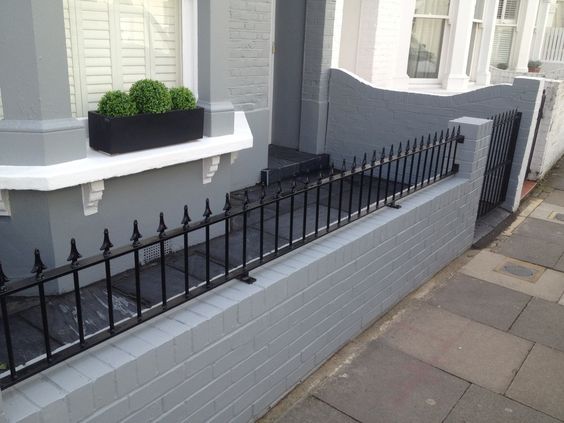Trafford's Places
Altrincham and around
The historic market town of Altrincham provides the central focus to the south-eastern corner of the Borough. It includes the surrounding neighbourhoods of Timperley, Bowdon and Hale and is enclosed by the open landscape of Cheshire and Dunham to the south and west, giving its extremities a semi-rural characterCharacter includes all of the elements that go to make a place, how it looks and feels, its geography and landscape, its noises and smells, activity, people and businesses. This character should be understood as a starting point for all development. Character can be understood at three levels; the area type in which the site sits, its surroundings and the features of the site. More. To the north it adjoins Sale via the principal route through the Borough (A56). A prominent feature in the modern landscape, the road, known as Watling Street, was established as the link from the legionary fortress at Chester to the fort at Manchester.
Altrincham Town Centre has a tight-knit core, and while there has been a loss of historic characterCharacter includes all of the elements that go to make a place, how it looks and feels, its geography and landscape, its noises and smells, activity, people and businesses. This character should be understood as a starting point for all development. Character can be understood at three levels; the area type in which the site sits, its surroundings and the features of the site. More in some areas it is largely well preserved. Moving away from the town centre the urban characterCharacter includes all of the elements that go to make a place, how it looks and feels, its geography and landscape, its noises and smells, activity, people and businesses. This character should be understood as a starting point for all development. Character can be understood at three levels; the area type in which the site sits, its surroundings and the features of the site. More quickly becomes suburban. Particularly notable are the neighbourhoods of Bowdon and Hale Barns with a proliferation of grand detached villa houses that is unique to this part of the Borough. The Broadheath area also contains a significant grouping of industrial buildings, breaking from the surrounding residential characterCharacter includes all of the elements that go to make a place, how it looks and feels, its geography and landscape, its noises and smells, activity, people and businesses. This character should be understood as a starting point for all development. Character can be understood at three levels; the area type in which the site sits, its surroundings and the features of the site. More.
With its attractive town centre, Altrincham has maintained a degree of economic autonomy and prosperity while also providing a place to live for those commuting to the city centre.
Opportunities exist to encourage sustainable movement through an attractive secondary street network and use of green corridors.
Within Altrincham and its surrounds there are many areas of older housing. These areas often contain Victorian and Edwardian residential properties, many of which are large detached and semi-detached properties set within spacious and mature landscaped gardens. Much of Altrincham, Bowdon and Hale has been designated as conservation areas with a number of buildings listed, thereby benefiting from legislative protection. This protection requires new development to take account of the architectural styles, massing and materials that characterise these areas. However, many older houses do not lie within conservation areas and are not listed. They may, however, have a significant role to play in characterising these established residential areas as their architectural style, form and layout help shape the identityThe identity or character of a place comes from the way that buildings, streets and spaces, landscape and infrastructure combine together and how people experience them. More of these areas.
The name Altrincham first appears as ‘Aldringeham’, probably meaning ‘homestead of Aldhere’s people’.
The earliest documented reference to the town is from 1290, when it was granted its charter as a Free Borough. Subsequently Altrincham developed as a market town during the medieval period. The town plan at that time was characterised by rectangular burgage plots laid out perpendicular to the road. Houses, often of two or three storeys in height, were constructed by the street with farmland behind. Many medieval buildings in the town centre were rebuilt in with brick or their existing timber framed structures were re-fronted with a Georgian appearance. Evidence of this remains within and surrounding the Old Market Place, Market Street and Church Street. The existing layout of Church Street is shown on Burdett’s 1777 Map of Cheshire.
The extension of the Bridgewater Canal in 1776 led to development of Altrincham. It also stimulated the development of market gardening locally, Altrincham was noted for the Altrincham or Altringham Carrot, known also as the “Superb Carrot” and the Bowdon Downs potato.
The Altrincham to Manchester railway line opened in 1849 and Altrincham and the surrounding areas became desirable places for the middle classes and commuters to live, leading to a renewed period of expansion and growth, which is greatly reflected in the town’s historic built environment and attractive suburban villas. The line was converted to be part of Manchester Metrolink in 1992 and remains in operation today.
Broadheath Industrial Park was founded by the Earl of Stamford in 1885. This was the world’s first industrial park, pre-dating Trafford Park by a decade. Covering 101 hectares, it was an important site for engineering companies, particularly machinery and tooling workshops.
The Linotype & Machinery Company Ltd, was established in Broadheath in 1889. The Company developed the Linotype Estate between 1897 and 1901 to accommodate workers. The houses have a rich architectural quality, with seven principal styles evident in their detailingThe details of a building are the individual components and how they are put together. Some are a deliberate part of the appearance of a building, including doors, windows and their surrounds, porches, decorative features and ironmongery. Others are functional, although they can also contribute to the appearance of a building. These include lighting, flues and ventilation, gutters, pipes and other rainwater details. Detailing affects the appearance of a building or space and how it is experienced. It also affects how well it weathers and lasts over time. More. This includes varying gable sizes, different window styles, some being set behind front gardens and others fronting almost directly onto the pavement, conveying a sense of layered development.
The historic settlement of Bowdon is mentioned in the Domesday Survey of 1086-87. Following the Norman Conquest of 1066, a timber castle at Watch Hill on theborder of Bowdon and Dunham Massey was erected. The site is designated as a Scheduled Monument and one of the most important archaeological sites in the Borough.
At the heart of Bowdon is a medieval village with many buildings re-faced, extended or rebuilt. There are a number of houses with evidence of timber framing which date back to the 17th century or earlier and roads which overlay earlier historic routes.
The opening of Bowdon Railway Station in 1849 provided a commuter route to the centre of Manchester, making the clean air and rural setting of the Bowdon Downs more attractive to developers. Initially, terraces and semi-detached houses were built, but by the 1860s and 1870s, the ‘merchant princes’ had built elegant townhouses and mansions, which persist as notable elements of the modern streetscapeStreetscape is a term used to describe the natural and built fabric of the street, and defined as the design quality of the street and its visual effect, particularly how the paved area is laid out and treated. It includes buildings, the street surface, and also the fixtures and fittings that facilitate its use – from bus shelters and signage to planting schemes. More.
In Victorian times the area was home to a lively and vigorous social, sporting (including cricket, tennis and croquet), intellectual and artistic community. There are many fine individual residences built in the area, in a variety of architectural styles and a number constructed from the distinctive Bowdon ‘white brick’. Some of these houses are the work of renowned architects.
The earliest record of Hale is in the Domesday Survey of 1086. Hale was mainly an agricultural area until the 19th century. By 1838-40 Hale Township consisted of a small village at Halebarns. The village at Halebarns had its own chapel and a school.
It was the arrival of the railway in Hale that prompted the change from an agricultural village to a commuter area for middle-class merchants working in the city.
The Township of Hale greatly expanded during the late 19th and early 20th centuries, much of it on land that had been reclaimed from Hale Moss.
Ashley Heath was formerly an agricultural settlement until around 1876 when substantial residential development increased the number of residential properties in the area.
The village of Timperley is sited on solid sandstone and the area subsequently developed with a number of large stone quarries, all now disused. Large blocks of sandstone were known as “tymps” and there is still evidence of the stones today in distinctive gate posts and garden walls within the borough. The former industry is reflected in place names in the area such as Quarrybank Terrace and The Stonemasons Arms.
Timperley became well known for its association with market gardening and certain areas were regarded for particular types of crops, such as ‘Timperley Early’ rhubarb. The Clay Lane and Wood Lane areas of Timperley feature greenhouse-type buildings set in a landscape of irregularly enclosed fields, many of which were apportioned in the early 19th century for small residential plots, with further infill occurring during the later 19th century.
The arrival of the Railway in 1849 triggered Timperley’s growth as an important village and place for commuters, leading to an influx of middle-class residents during the mid and late 19th century.
Development Plan Documents
Old Market Place
Stamford New Road
The Downs
Ashley Road
Bowdon
Hale Station
South Hale
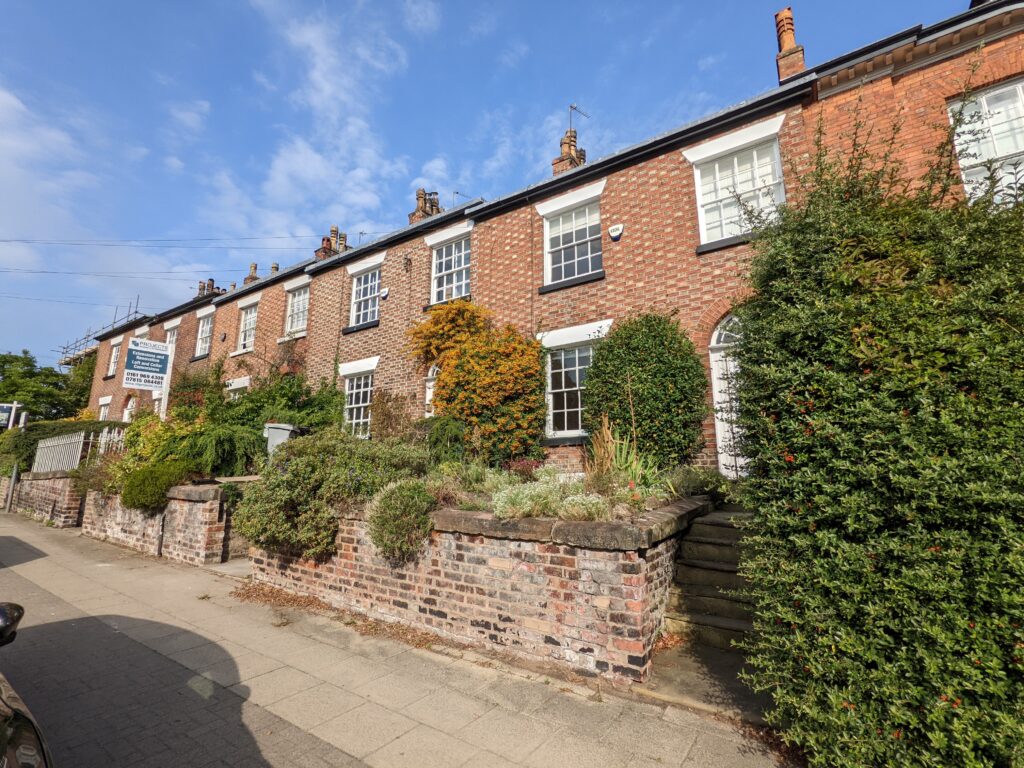
The Downs, Altrincham
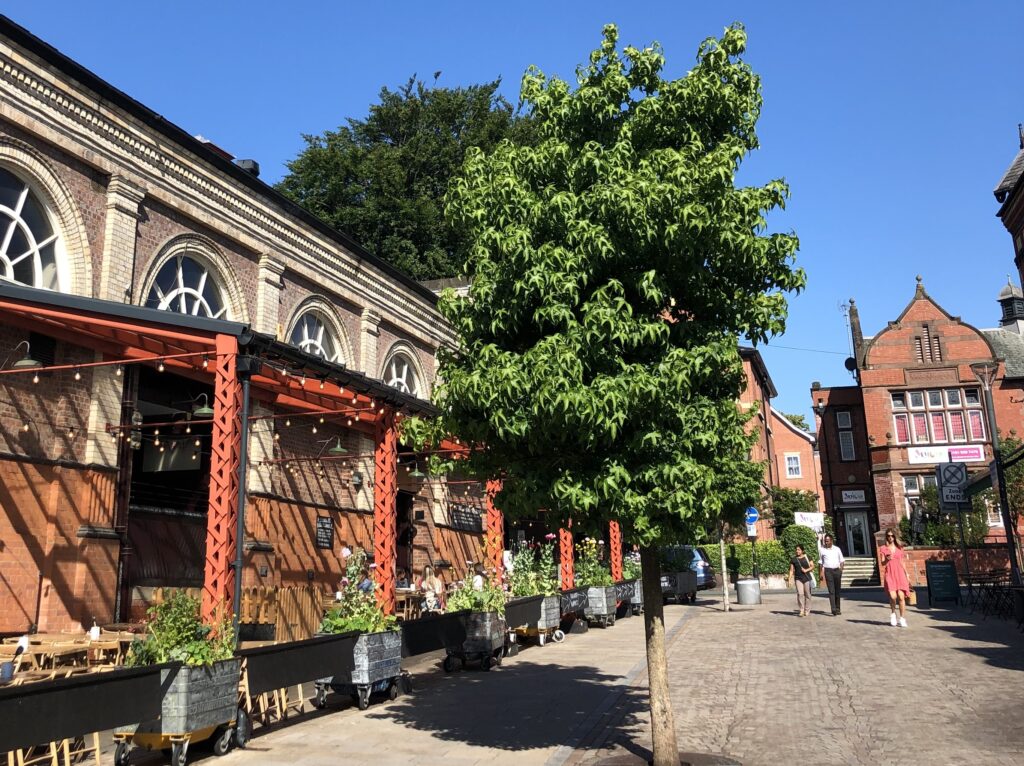
Altrincham Market
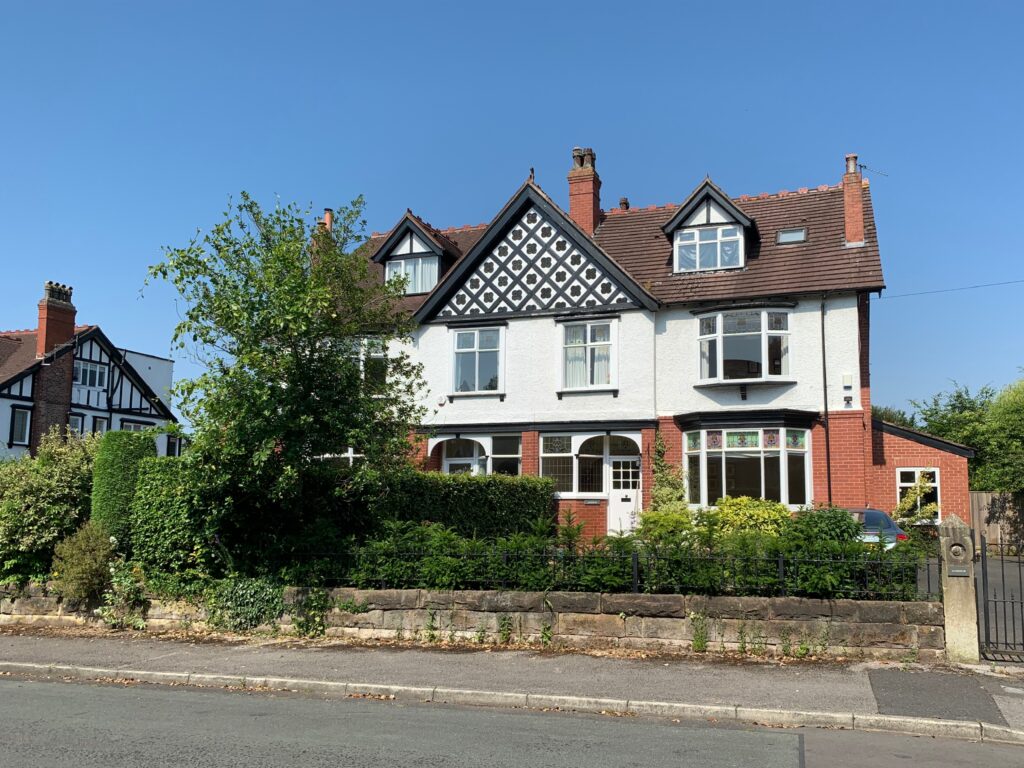
Hale
Evolution
Local Character Areas
Altrincham, with its vibrant commercial and cultural centre and traditional market town quarter is Trafford’s principal town centre. Attractive, historic residential areas sit close to the centre;
Bowdon, a residential village directly adjoining Altrincham. Notable for its concentration of large Victorian villas and mansion houses;
Hale has its own village centre and high street and alongside Bowdon and Altrincham makes up the core of the area;
Hale Barns is a residential neighbourhood with a variety of house types but typically large detached properties set in established tree lined streets;
Timperley has a small village centre and high street and is a low-density residential area, comprising detached and semi-detached post war housing;
West Timperley is largely residential in characterCharacter includes all of the elements that go to make a place, how it looks and feels, its geography and landscape, its noises and smells, activity, people and businesses. This character should be understood as a starting point for all development. Character can be understood at three levels; the area type in which the site sits, its surroundings and the features of the site. More but includes a successful commercial area centred around Trafford College on the A56 corridor;
Broadheath is a historically established industrial and commercial estate which included the internationally renowned Linotype Works alongside the Bridgewater Canal. It now includes a popular retail park and emerging new residential communities;
Davenport Green is an open landscape which stretches from the edge of Altrincham town centre towards Manchester Airport providing space for recreation and nature. Major new residential and commercial communities are planned for this area through Places for Everyone;
The A56 Corridor is an important sub-regional road network that runs through the Borough and terminates south of Altrincham, before connecting with the motorway network. It acts as a window to the Borough and provides opportunities for improved greening and high-quality development to advertise Trafford as a place to invest;
The Bridgewater Canal corridor runs through Broadheath and Oldfield Brow providing a green and blue corridor for residents with links to Dunham Massey and the Cheshire countryside beyond;
Former railway lines to the west provide strategic recreation corridors and connect with nearby towns. Trafford Design Code Trafford’s Places
Place Specific Design Cues
Context dependent design cues should be taken from the best examples of properties that were built at the time these areas began to develop. There are distinct differences between the architectural styles and materiality of Altrincham and the surrounding villages.
Please refer to the Common Housing Types in Trafford link for guidance on how to understand context. Characteristics commonly found in Altrincham and its surrounds are set out below:
Notable buildings and landmarks – consider how these might inform new design.
Built FormForm is the three-dimensional shape and modelling of buildings and the spaces they define. Buildings and spaces can take many forms, depending upon their: size and shape in plan; height; bulk – their volume; massing – how bulk is shaped into a form; building lines – the alignment of building frontages along a street; and relationship to the plot boundary – and whether they share party walls or not. In the case of spaces, their form is influenced by the buildings around them. More, Height, Roofscape – generally two or three storey with pitched roofs. Often semi-detached or detached villas with smaller areas of terracing and cottages.
Local building materials – almost exclusively red brick laid in traditional bonds with smaller numbers of buildings constructed from sandstone and Bowdon “white brick”. Some dwellings incorporate a roughcast render at first floor. Embellishment is usually picked out in terracotta, gauged brick or sandstone. The tones of red brick do vary depending on the locality; red stock brick is often found in Altrincham with handmade Cheshire commons to side or rear elevations with browner tones of brick found in areas of Hale. Roofs are typically clad in blue slate with decorative ridge tiles sometime with weathervanes or finials; there are smaller numbers of red clay tiled roofs. Windows are typically painted timber, some with surviving leaded lights or stained glass. Doors are also painted timber along with painted timber shop fronts in Hale and Altrincham.
Façade composition – often vertically proportioned elevations, with bay windows at one and two storeys and sliding sash or casement windows.
Architectural detailingThe details of a building are the individual components and how they are put together. Some are a deliberate part of the appearance of a building, including doors, windows and their surrounds, porches, decorative features and ironmongery. Others are functional, although they can also contribute to the appearance of a building. These include lighting, flues and ventilation, gutters, pipes and other rainwater details. Detailing affects the appearance of a building or space and how it is experienced. It also affects how well it weathers and lasts over time. More –Building elevations display a variety of good quality architectural styles, detailingThe details of a building are the individual components and how they are put together. Some are a deliberate part of the appearance of a building, including doors, windows and their surrounds, porches, decorative features and ironmongery. Others are functional, although they can also contribute to the appearance of a building. These include lighting, flues and ventilation, gutters, pipes and other rainwater details. Detailing affects the appearance of a building or space and how it is experienced. It also affects how well it weathers and lasts over time. More and expression, often in the Arts and Crafts style with a high level of architectural integrity. There are a number of consistent design detailsThe details of a building are the individual components and how they are put together. Some are a deliberate part of the appearance of a building, including doors, windows and their surrounds, porches, decorative features and ironmongery. Others are functional, although they can also contribute to the appearance of a building. These include lighting, flues and ventilation, gutters, pipes and other rainwater details. Detailing affects the appearance of a building or space and how it is experienced. It also affects how well it weathers and lasts over time. More for example the use of overhanging eaves, bays, oriel windows, open porches, embellished or recessed doorways. Mock Tudor panelling or planted timber detail and roughcast render to first floor can also be found. Buildings along Stamford New Road are particularly detailed on the upper floors with splayed corners and plaques with names, initial and dates. Cottages around the historic centre of Bowdon are more modest in appearance with simple detailingThe details of a building are the individual components and how they are put together. Some are a deliberate part of the appearance of a building, including doors, windows and their surrounds, porches, decorative features and ironmongery. Others are functional, although they can also contribute to the appearance of a building. These include lighting, flues and ventilation, gutters, pipes and other rainwater details. Detailing affects the appearance of a building or space and how it is experienced. It also affects how well it weathers and lasts over time. More around windows and arched or cambered brick headers. The Linotype is a planned estate were houses have a rich architectural quality, with seven principal styles evident in their detailingThe details of a building are the individual components and how they are put together. Some are a deliberate part of the appearance of a building, including doors, windows and their surrounds, porches, decorative features and ironmongery. Others are functional, although they can also contribute to the appearance of a building. These include lighting, flues and ventilation, gutters, pipes and other rainwater details. Detailing affects the appearance of a building or space and how it is experienced. It also affects how well it weathers and lasts over time. More.
Boundary treatment –. The area is characterised by the low garden walls of large stone blocks with gate posts, with hedges of various species above and trees along the boundary.
StreetscapeStreetscape is a term used to describe the natural and built fabric of the street, and defined as the design quality of the street and its visual effect, particularly how the paved area is laid out and treated. It includes buildings, the street surface, and also the fixtures and fittings that facilitate its use – from bus shelters and signage to planting schemes. More patterns and street structure – Consider the urban grainThe pattern of the arrangement of street blocks, plots and their buildings in a settlement. The degree to which an area’s pattern of blocks and plot subdivisions is respectively small and frequent (fine grain), or large and infrequent (coarse grain). Urban grain is a key component of defining the character of a place. More. Houses are often set in spacious gardens, which are characterised by a variety of mature trees and shrubs and glimpsed views of buildings. The characterCharacter includes all of the elements that go to make a place, how it looks and feels, its geography and landscape, its noises and smells, activity, people and businesses. This character should be understood as a starting point for all development. Character can be understood at three levels; the area type in which the site sits, its surroundings and the features of the site. More of these areas is often defined by its spaciousness, mature landscaping and the compatibility of natural and man-made features. In areas such as Altrincham Town Centre the plot ratio is often greater in depth than width, although there are some exceptions. The scale, massing and form of buildings results in a strong building line and sense of enclosure, this contributes to the visual interest and rhythm of the streetsceneAll spaces and features which form the street environment, including buildings, street furniture, fittings and finishes and green infrastructure and open spaces. More.

